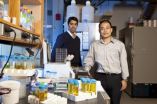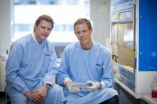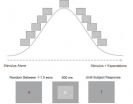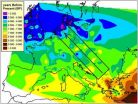(Press-News.org) The human body has a remarkable ability to heal itself. Due to the presence of dedicated stem cells, many organs can undergo continuous renewal. When an organ becomes damaged, stem cells in the organ are typically activated, producing new cells to regenerate the tissue. This activity of stem cells, however, has to be carefully controlled, as too much stem cell activity can cause diseases like cancer. Current research in stem cell biology is starting to unravel the control mechanisms that maintain a balance between efficient regeneration and proper control of stem cell function. Strikingly, it is becoming evident that oxidative stress is at the heart of this regulation. Researchers at the University of Rochester have now identified a genetic switch that controls oxidative stress in stem cells and thus governs stem cell function.
The work was done by biologists Heinrich Jasper, Christine Hochmuth and Benoit Biteau, and geneticist Dirk Bohmann of the University of Rochester Medical Center, who hoped to gain some insight into human stem cell processes by studying the intestinal stem cells of Drosophila (fruit flies), which have genetic structures that, in many ways, mimic those that are found in humans. The researchers studied the function of two genes, Nrf2 and Keap1, which were already known as regulators of cellular responses to oxidative stress. The research team was surprised to discover that, in contrast to other cell types, Nrf2 was active within the stem cells even in the absence of stress. This finding suggested that Nrf2 might have an unusual role in the control of stem cell function.
Indeed, the researchers found that Nrf2 prevents stem cells from dividing, and that only when Nrf2 is repressed can stem cell division take place. That's where the other gene, Keap1, comes into play.
When the intestine of the fruit fly is damaged, proteins secreted from the damaged cells send signals that activate stem cells. Jasper and colleagues learned that Keap1 inhibits the function of Nrf2 in stem cells experiencing such signals, making it possible for the stem cells to divide and regenerate the intestinal tissue.
Interestingly, Nrf2 controls stem cell activity by influencing the level of ROS (reactive oxygen species) in these cells. ROS are highly reactive molecules that, though occurring naturally in cells, can harm the cell structure if their concentration increases significantly. Nrf2 reduces the ROS levels in cells—and that's the mechanism by which Nrf2 helps to determine whether stem cells divide in fruit flies: Intestinal stem cell division can only take place when ROS levels go up, and as long as Nrf2 does its job, that won't happen. But when Keap1 represses Nrf2, ROS levels increase, allowing stem cells to divide and initiate regeneration. This switch is thus a critical stress sensor that allows proper control of stem cell activity in the intestine. Accordingly, the researchers found that when Nrf2 function is disrupted, the fly intestine degenerates due to excessive production of new cells by the stem cells.
Their work is being published in the February 4 issue of the scientific journal Cell Stem Cell.
Jasper expects other scientists to start testing whether stem cell regulation works the same way in small vertebrates and humans. "If it does, it would encourage the adaptation of these findings to new therapies. And scientists may eventually learn how to control stem cell function to safely replace damaged tissue in humans."
The University of Rochester researchers are now trying to learn more about the processes behind Keap1 and Nrf2 activity. "How does Keap1 know that there's a signal from the damaged tissue?" asked Jasper. "We're trying to understand what happens upstream and what happens downstream—before and after Keap1 is activated."
INFORMATION:
The research project was funded by NYSTEM (New York State Stem Cell Initiative), National Institute on Aging (part of the National Institutes of Health), and the Ellison Medical Foundation.
For more information, visit the following web sites:
http://www.rochester.edu/College/BIO/professors/jasper.html
http://www.urmc.rochester.edu/biomedical-genetics/faculty/bohmann-lab.cfm
Scientists unlock 1 mystery of tissue regeneration
Findings to be published in Cell Stem Cell
2011-02-04
ELSE PRESS RELEASES FROM THIS DATE:
CSHL study unmasks a stem cell origin of skin cancer and the genetic roots of malignancy
2011-02-04
Cold Spring Harbor, N.Y. – A constellation of different stem cell populations within our skin help it to cope with normal wear and tear. By constantly proliferating, the stem cells allow skin to replenish itself, allowing each cell to be replaced by a new one about once a month. But the normal cycle of division and death within one or more of these stem cell types can sometimes be derailed by genetic mishaps. Such events are believed to spawn carcinomas and other deadly skin cancers, which are the mostly frequently diagnosed cancers in the United States.
Researchers ...
Genetic study uncovers new path to Polynesia
2011-02-04
Surprising new evidence which overturns current theories of how humans colonised the Pacific has been discovered by scientists at the University of Leeds, UK.
The islands of Polynesia were first inhabited around 3,000 years ago, but where these people came from has long been a hot topic of debate amongst scientists. The most commonly accepted view, based on archaeological and linguistic evidence as well as genetic studies, is that Pacific islanders were the latter part of a migration south and eastwards from Taiwan which began around 4,000 years ago.
But the Leeds research ...
2 severe Amazon droughts in 5 years alarms scientists
2011-02-04
New research shows that the 2010 Amazon drought may have been even more devastating to the region's rainforests than the unusual 2005 drought, which was previously billed as a one-in-100 year event.
Analyses of rainfall across 5.3 million square kilometres of Amazonia during the 2010 dry season, published tomorrow in Science, shows that the drought was more widespread and severe than in 2005. The UK-Brazilian team also calculate that the carbon impact of the 2010 drought may eventually exceed the 5 billion tonnes of CO2 released following the 2005 event, as severe droughts ...
Sentinel of change: Waterflea genome to improve environmental monitoring capabilities
2011-02-04
WALNUT CREEK, Calif.—A tiny crustacean that has been used for decades to develop and monitor environmental regulations is the first of its kind to have its genetic code sequenced and analyzed—revealing the most gene-packed animal characterized to date. The information deciphered could help researchers develop and conduct real-time monitoring systems of the effects of environmental remediation efforts.
Considered a keystone species in freshwater ecosystems, the waterflea, Daphnia pulex, is roughly the size of the equal sign on a keyboard. Its 200 million-base genome was ...
Scripps Research scientists develop powerful new methodology for stabilizing proteins
2011-02-04
La Jolla, CA, February 2, 2011 – Embargoed by the journal Science until February 3, 2011, 2 PM, Eastern time - A team of scientists at The Scripps Research Institute has discovered a new way to stabilize proteins — the workhorse biological macromolecules found in all organisms. Proteins serve as the functional basis of many types of biologic drugs used to treat everything from arthritis, anemia, and diabetes to cancer.
As described in the February 4, 2011 edition of the journal Science, when the team attached a specific oligomeric array of sugars called a "glycan" to ...
Princeton scientists discover mechanism involved in breast cancer's spread to bone
2011-02-04
In a discovery that may lead to a new treatment for breast cancer that has spread to the bone, a Princeton University research team has unraveled a mystery about how these tumors take root.
Cancer cells often travel throughout the body and cause new tumors in individuals with advanced breast cancer -- a process called metastasis -- commonly resulting in malignant bone tumors. What the Princeton research has uncovered is the exact mechanism that lets the traveling tumor cells disrupt normal bone growth. By zeroing in on the molecules involved, and particularly a protein ...
Boosting body's immune response may hold key to HIV cure
2011-02-04
Australian scientists have successfully cleared a HIV-like infection from mice by boosting the function of cells vital to the immune response.
A team led by Dr Marc Pellegrini from the Walter and Eliza Hall Institute showed that a cell signaling hormone called interleukin-7 (IL-7) reinvigorates the immune response to chronic viral infection, allowing the host to completely clear virus. Their findings were released in today's edition of the journal Cell.
Dr Pellegrini, from the institute's Infection and Immunity division, said the finding could lead to a cure for chronic ...
Expectations speed up conscious perception
2011-02-04
The human brain works incredibly fast. However, visual impressions are so complex that their processing takes several hundred milliseconds before they enter our consciousness. Scientists at the Max Planck Institute for Brain Research in Frankfurt am Main have now shown that this delay may vary in length. When the brain possesses some prior information − that is, when it already knows what it is about to see − conscious recognition occurs faster. Until now, neuroscientists assumed that the processes leading up to conscious perception were rather rigid and that ...
Northern hunters slowed down advance of Neolithic farmers
2011-02-04
One of the most significant socioeconomic changes in the history of humanity took place around 10,000 years ago, when the Near East went from an economy based on hunting and gathering (Mesolithic) to another kind on agriculture (Neolithic). Farmers rapidly entered the Balkan Peninsula and then advanced gradually throughout the rest of Europe.
Various theories have been proposed over recent years to explain this process, and now physicists from the University of Girona (UdG) have for the first time presented a new model to explain how the Neolithic front slowed down as ...
Adapting technology to elderly people
2011-02-04
Massive Art Multimedia in Austria and CoSi Elektronik in Germany have a history of collaboration on successful technical projects. A brainstorming session between their developers produced the idea of bringing together many aspects of the modern computing world and applying them specifically to the one group in society that is least likely to already feel those benefits - senior citizens. As with so many projects of this nature, the funding for development was out of reach of two SMEs. By facilitating the funding process EUREKA permitted the development of the project now ...
LAST 30 PRESS RELEASES:
UVA’s Jundong Li wins ICDM’S 2025 Tao Li Award for data mining, machine learning
UVA’s low-power, high-performance computer power player Mircea Stan earns National Academy of Inventors fellowship
Not playing by the rules: USU researcher explores filamentous algae dynamics in rivers
Do our body clocks influence our risk of dementia?
Anthropologists offer new evidence of bipedalism in long-debated fossil discovery
Safer receipt paper from wood
Dosage-sensitive genes suggest no whole-genome duplications in ancestral angiosperm
First ancient human herpesvirus genomes document their deep history with humans
Why Some Bacteria Survive Antibiotics and How to Stop Them - New study reveals that bacteria can survive antibiotic treatment through two fundamentally different “shutdown modes”
UCLA study links scar healing to dangerous placenta condition
CHANGE-seq-BE finds off-target changes in the genome from base editors
The Journal of Nuclear Medicine Ahead-of-Print Tip Sheet: January 2, 2026
Delayed or absent first dose of measles, mumps, and rubella vaccination
Trends in US preterm birth rates by household income and race and ethnicity
Study identifies potential biomarker linked to progression and brain inflammation in multiple sclerosis
Many mothers in Norway do not show up for postnatal check-ups
Researchers want to find out why quick clay is so unstable
Superradiant spins show teamwork at the quantum scale
Cleveland Clinic Research links tumor bacteria to immunotherapy resistance in head and neck cancer
First Editorial of 2026: Resisting AI slop
Joint ground- and space-based observations reveal Saturn-mass rogue planet
Inheritable genetic variant offers protection against blood cancer risk and progression
Pigs settled Pacific islands alongside early human voyagers
A Coral reef’s daily pulse reshapes microbes in surrounding waters
EAST Tokamak experiments exceed plasma density limit, offering new approach to fusion ignition
Groundbreaking discovery reveals Africa’s oldest cremation pyre and complex ritual practices
First breathing ‘lung-on-chip’ developed using genetically identical cells
How people moved pigs across the Pacific
Interaction of climate change and human activity and its impact on plant diversity in Qinghai-Tibet plateau
From addressing uncertainty to national strategy: an interpretation of Professor Lim Siong Guan’s views
[Press-News.org] Scientists unlock 1 mystery of tissue regenerationFindings to be published in Cell Stem Cell




